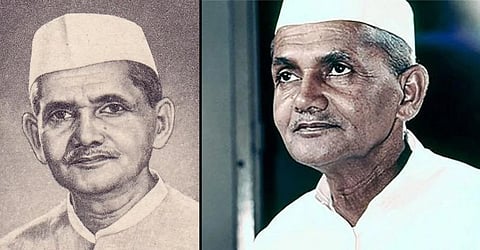

On the solemn occasion of Lal Bahadur Shastri’s Death Anniversary, the nation pays homage to a visionary leader whose life and political career left a significant mark on India’s history. As former Prime Minister of India, his legacy has left a distinguished mark on India’s Political Landscape. Let’s delve into the significant aspects of his life, achievements, and the enduring legacy he left behind:
Early life:
Lal Bahadur Shastri was born on October 2, 1904. He was born in Mughalsarai, a small railway town, seven miles from Varanasi in Uttar Pradesh. His father was a school teacher. When Lal Bahadur Shastri was only one and a half years old, his father died. His mother settled in her father's house with her three children. Lal Bahadur's school education in that small town was not special but despite being struck with poverty, his childhood was quite happy. Everyone at home used to call him Nanhe, meaning “little one”.
Political Career and Achievements:
Lal Bahadur Shastri’s political career unfolded during a crucial period in India’s history. A dedicated follower of Mahatma Gandhi, Shastri played a pivotal role in the Indian independence movement. His involvement in the non-cooperation movement marked the beginning of a trajectory that would lead him to the highest echelons of power. Lal Bahadur Shastri was only sixteen years old when Gandhiji called upon his countrymen to join the non-cooperation movement. He had decided to leave his studies on this call of Gandhi. His decision was met with adversity from his family who tried hard to stop him, calling his decision wrong but they failed. Lal Bahadur had made up his mind. All those close to him knew that once he made up his mind, he would never change his decision because Lal Bahadur, who appeared humble on the outside, was as firm as a rock on the inside.
Shastri’s ascent continued as he held various ministerial positions, displaying his acumen for governance. His leadership during the Indo-Pak war in 1965 showcased his commitment to the nation’s security and earned him widespread respect.
Shastri’s tenure as the second Prime Minister of India (1964-1966) was characterized by his emphasis on self-sufficiency in food production. The Green Revolution, initiated under his leadership, aimed to transform India into a food-surplus nation, a legacy that continues to impact the country’s agricultural landscape.
His slogan “Jai Jawan Jai Kisan” (Hail the Soldier, Hail the Farmer) encapsulated Shastri’s vision for a strong and self-reliant India. His efforts towards strengthening the agricultural sector and fostering unity during challenging times solidified his status as a leader of the people.
Death:
Lal Bahadur Shastri passed away on January 11, 1966, in Tashkent, Uzbekistan, shortly after signing the Tashkent Agreement, which was aimed at resolving the Indo-Pak conflict. Shastri’s legacy endures through his commitment to social justice, economic progress, and national unity. His leadership style, characterized by simplicity and integrity, continues to inspire political leaders and citizens alike.
On January 11, the nation and the world join hands to observe the death anniversary of Lal Bahadur Shastri. This solemn occasion provides an opportunity to reflect on the remarkable contributions of this stalwart leader. On this solemn occasion, the nation observes various events, including memorial services, discussions on Shastri’s contributions, and educational programs to ensure that the younger generation understands and values the legacy of this remarkable countryman. As the world remembers Lal Bahadur Shastri on his death anniversary, his ideals and contributions remain etched in the annals of India’s history, serving as a guiding light for future generations.